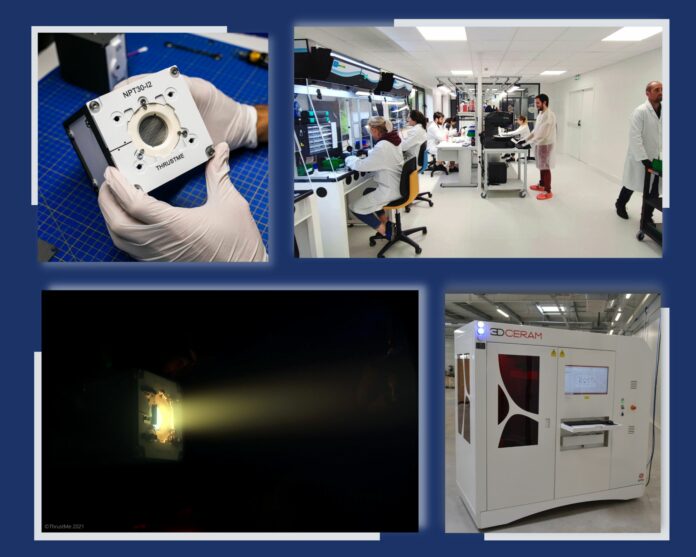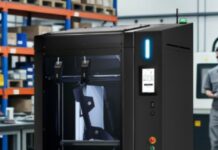ThrustMe, a company that specializes in in-space propulsion and satellite orbital maneuvering strategies, is currently relying on ceramic 3D printing, for the manufacturing of specific parts in its thruster. After a demonstration of its iodine-fueled electric propulsion system in space in 2020, ThrustMe was looking to push the boundaries of its manufacturing process, and turned to 3DCeram for their expertise in AM.
“The decision to adopt 3D printing technology for manufacturing a specific part in our thruster was driven by a number of factors that emerged from an extensive research process. Primarily, the space industry often requires the production of complex shapes that cannot be easily obtained through traditional machining methods. At ThrustMe, we don’t talk about only the complexity but also the miniaturization, a critical requirement in the development of our products. In such cases, 3D printing offers a transformative solution by enabling the creation of specific designs with the precision we need,” Elena Zorzolli Rossi, ThrustMe product manager, said.
As a reminder, 3DCeram’s technology is based on SLA, a process that has already supported the manufacturing strategy of aerospace companies like Anywaves. The use of SLA requires the engineering team working with ThrustMe to select a material that would have withstood the harsh space environment. The latter includes the vacuum and extreme temperature ranges, and specific features of the iodine plasma propulsion system such as energetic fluxes of elementary particles, secondary emission, intense sputtering and reactive ion etching.
“The main consideration that influenced our choice was the operating conditions our products encounter. Some of our components are exposed to high temperatures in a chemically active plasma environment, requiring a material with exceptional heat and chemical resistance. Ceramics emerged as the most suitable option in this regard, with its remarkable thermal and chemical stability. Another vital characteristic that weighed heavily in favour of ceramic was its wide range of thermal conductivity. The efficient transfer or isolation of heat is crucial in our components, as it helps to guide the thermal fluxes effectively and prevent overheating or overcooling. Ceramic materials exhibit an excellent range of conductivity properties, enabling selective heat transfer and ensuring optimal performance in our products. Additionally, the electric properties of ceramic played a significant role in our material selection process. Our components require a material that can effectively isolate and protect against high-voltage electrical breakdowns. Ceramics possess exceptional electrical isolation properties, making it an ideal choice to meet our stringent requirements in this aspect,” Zorzolli Rossi explains.
While no information has been given on the exact space application that results from 3DCeram and ThrustMe’s collaboration, the company believes that by taking more risks by relying on AM will help them iterate quickly, experiment new ideas that would lead them to breakthroughs in areas such as satellite technology, space tourism, and even interplanetary exploration.
“Looking a little closer, it is not only the internal structure and organization that needs to be rethought compared to the more traditional industry. The whole production chain needs to be prepared to meet New Space costs or lead times,” Zorzolli Rossi concludes.
Read more: Behind the Scenes of « the Space Race » with Virgin Orbit
Remember, you can post free of charge job opportunities in the AM Industry on 3D ADEPT Media or look for a job via our job board. Make sure to follow us on our social networks and subscribe to our weekly newsletter : Facebook, Twitter, LinkedIn & Instagram ! If you want to be featured in the next issue of our digital magazine or if you hear a story that needs to be heard, make sure to send it to contact@3dadept.com






